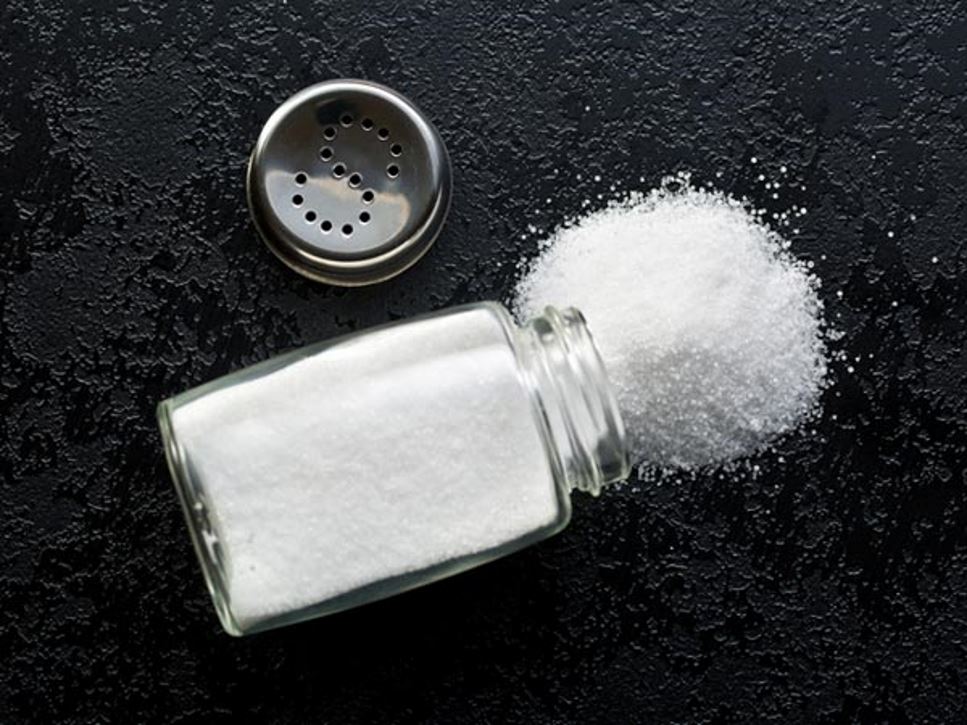Sodium is an essential nutrient. However, many Americans are getting too much of it. Plus, we often aren't aware of where it's hiding in the foods we eat. Learn how to identify foods with sodium and why lowering your sodium intake may benefit your health.
Sodium Intake Adds Up
Salt has many uses. It raises the boiling point of water, tenderizes meats and enhances the flavor of many foods. However, a teaspoon of table salt contains 2,300 milligrams of sodium. For most people 14 years and older, it's recommended to limit sodium to less than 2,300 milligrams per day.
Most people benefit from lower amounts of sodium in their diet. Individuals 14 and older are encouraged to limit sodium to 2,300 milligrams or less per day with recommendations even lower for younger children:
- Children 1 to 3 years old should limit sodium to 1,200 milligrams or less per day
- Children ages 4 to 8 years old should limit sodium to 1,500 milligrams or less per day
- Children ages 9 to 13 should limit sodium to 1,800 milligrams or less per day
It would be difficult to consume that much sodium in one bite. Instead, sodium intake adds up throughout the day. And, based on estimates by the Centers for Disease Control and Prevention, only a small amount of the average Americans' daily intake comes from adding salt to food at the table. Salt in processed and ready-to-eat foods delivers the majority of sodium in our diets.
Sodium is in many of the foods we eat and, if consumed in excess, it can be harmful to our health. Studies have shown that decreasing sodium intake can lower blood pressure, especially when combined with the Dietary Approaches to Stop Hypertension (DASH) diet. The DASH diet is a fruit and vegetable-centered eating style that is lower in sodium and fat. Foods that provide potassium are an important part of the DASH diet, including choices such as potatoes, sweet potatoes, squash, beans and oranges.
Hidden Sources of Sodium
Beware: Sodium isn't only in salty snacks or the saltshaker. Many prepared foods and meals at restaurants, cafes and packaged items at the grocery store have sodium. It's an inexpensive way to add flavor and is an effective way to preserve foods. Even foods with low to moderate sodium content can lead to a high sodium diet if you consume too much of them.
Common foods that contribute to higher daily sodium intakes are bread, cold cuts and cured meats, pizza, fresh and processed poultry, soups, sandwiches (including burgers), cheese and pasta.
How to Reduce Sodium Intake
The best way to combat high sodium in your daily diet is to watch your intake of highly processed foods. Read the Nutrition Facts label and look for the Daily Value of sodium in the foods you eat. And consider these satisfying options to keep sodium under control: fruits and vegetables, unsalted nuts, beans and whole grains.
Lower your sodium intake with the following tips:
- Get more natural sources of potassium by aiming for 3 to 5 servings of fruits and vegetables each day.
- Watch portion sizes, especially when it comes to prepared foods.
- Limit cured meats, including cold cuts and sausages.
- Rinse canned foods or look for no-salt-added varieties.
- When choosing packaged foods, look for lower sodium options.
- Remove the saltshaker from the table.
- Eat more whole grains such as brown rice, quinoa, millet, oats, bulgur and whole-wheat pasta, bread and crackers.
- Include beans and lentils as plant-based sources of protein. These foods also provide potassium.
For more information on how to manage your sodium intake with high blood pressure or other conditions, meet with a registered dietitian nutritionist.
References
Find a Nutrition Expert
Looking for credible nutrition information and recommendations? The Academy of Nutrition and Dietetics' network of credentialed food and nutrition practitioners are ready to help!

